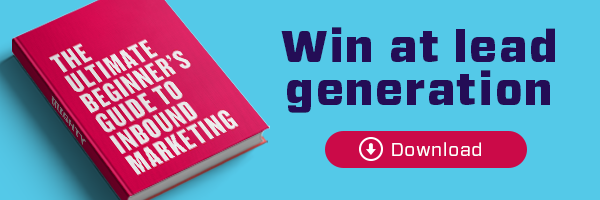If you've decided to implement an inbound marketing strategy, kuddos. You've taken a step in the right direction. Correctly implementing and maintaining an inbound marketing strategy takes time. We recommend choosing an inbound marketing software to not only simplify the process, but also help you implement your strategy in the most optimal way possible.
While there are some free options out there, you'll likely have to piece together several different tools. Doing so is time-consuming and inefficient. Along with alleviating many of those inefficiencies, paid inbound software has many benefits including ease of use as well as a comprehensive overview of inbound campaigns. We often recommend Hubspot because of its all-in-one functionality that allows users to blog, create lead capture forms, plan social media, and monitor metrics. Hubspot also offers SEO and inbound training courses. As one of the more affordable options on the market, it’s a popular choice for a range businesses.
Now that you've made the decision to invest in both inbound marketing and Hubspot's software, how can you make sure you are on track get an ROI on your Hubspot investment? The success of your inbound marketing efforts hinges on setting yourself up right. Remember, it's a marathon, not a sprint.
Step 1
Establish what you want to accomplish through inbound marketing. For most, it's an increase in leads or revenue. It's a good idea to involve all stakeholders in this step. Doing so increases the buy-in from those outside the marketing department and helps everyone understand the why behind your inbound marketing strategy. When having your goal-setting and planning meetings, we recommend using the SMART goal methodology. SMART stands for specific, measurable, attainable, relevant and timely.
Here's a template to guide your goal setting.
Step 2
Establish your inbound marketing team. Depending on your budget and the scope of your strategy, you'll want to have a dedicated team of people internally that includes a strategist, a writer, a graphic designer, and a web developer. Your strategist and writer should be trained in inbound marketing.
Another option is to hire an agency to take on some if not all of these roles for you. An agency will be armed with the skills needed to manage the campaign and may be more cost-effective than hiring an internal team.
Step 3
Align your sales and marketing teams. In traditional business settings, sales and marketing are separate teams working toward the same goal of producing revenue for the company. All too often, these teams take different routes to get there, resulting in counterproductive work by both teams.
Today’s buyers demand a different buying experience than the traditional salesperson can offer. They rely on product reviews, case studies, and blogs for information rather than solely relying on a salesperson for information. Since marketing teams typically produce this content, sales and marketing integration is becoming increasingly more important.
The term smarketing has emerged as a way to describe sales and marketing alignment. When sales and marketing teams are integrated, they produce up to 20% more annual revenue growth. Implementing a smarketing strategy within your own business is fairly simple and straightforward.
Integrating your sales and marketing teams should be done through utilizing closed-loop reporting, maintaining open communication, relying on data, and understanding their respective role in reaching your company's inbound marketing goals.
Check out this article on integrating your sales and marketing teams.
Step 4
Organize your database. Do this by making sure your entire team is using the same CRM and that it integrates with Hubspot and make sure the data you have is current. Having an established process for data input and maintenance is also a time saver. Doing so will be a BIG contributor to increasing your Hubspot ROI. Here's why.
Companies spend an estimated $100 per record maintaining their database. That means if you have 100,000 records and even just 10 percent are inaccurate, you’re spending $1 million more than necessary.
Aside from being a money saver, a lean and clean database also has the following benefits:
- Improved segmentation and targeting
- Improved email response
- Improved persona identification
- Improved qualified lead generation
- A happier sales team
Remember, using Hubspot or any other inbound marketing software is not a magic wand. In order to yield any kind of success, inbound marketing must be done correctly and consistently from the start. With some planning and dedication, you can gradually increase your Hubspot ROI.


